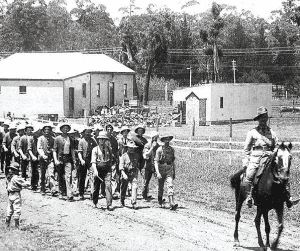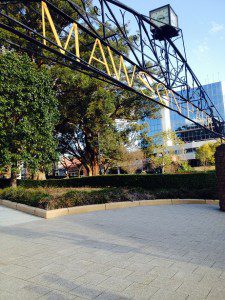
Exactly 100 years ago, at the height of the Great War, recruiting committees were formed in nearly every country town.
Men who were determined to enlist for the war to help the country in its hour of need marched all the way to Sydney, recruiting along the way.
One of those marches set out from Wagga Wagga and finished recruiting in Campbelltown in 1915.
It became known as the Kangaroo March and was the longest of them all at more than 560 kilometres.
Now, 100 years later, the Kangaroo March will be re-enacted and once again a highlight will be in Campbelltown on Saturday, October 10.
The re-enactment march will end in Campbelltown after a 36 day journey, with descendants of some of the original Kangaroos joining at various stages along the route.
In true Campbelltown spirit, the city will welcome the group of “recruits’’ at their last stop with a formal Valedictory Commemoration ceremony, featuring a number of addresses and entertainment by local community bands in Mawson Park.
A mayoral reception will follow at the Campbelltown Arts Centre.
The re-enactment will follow the original march route of Wagga Wagga, Junee, Illabo, Bethungra, Cootamundra, Wallendbean, Galong, Goondah, Binalong, Bowning, Yass, Goulburn, Wingello, Bundanoon, Sutton Forest, Moss Vale, Mittagong, Picton, Camden and Campbelltown.
To retain the march’s country character, no recruits were taken on after Campbelltown.
The military authorities in 1915 attempted to stop the Kangaroo march at Goulburn, intending that they should enter camp for training, but it continued to Sydney.
There were accusations of misconduct both during the march and after the Kangaroos had entered training camp.
They staged a strike outside Goulburn and again in Sydney over leave, both strikes led by Australian Workers’ Union members who had been recruited at Galong and Goondah.
Many of the Kangaroos were allotted to the 55th Battalion, which arrived in France in 1916.
One of the Kangaroos, John Ryan of Tumut, was to receive a Victoria Cross.

Other awards to marchers included two Distinguished Conduct Medals and seven Military Medals.
It had all started in the central west of NSW.
A movement began which became known as the “Gilgandra snowball’’.
Under the leadership of W.T. (“Captain Bill’’) Hitchen, 20 or so men who were determined to enlist for war service started off to march to Sydney.
Gathering other recruits along the way, they numbered about 300 by the time they reached Sydney.
This was known as the Coo-ee March.
Their example was soon followed by other marches from around NSW and Queensland: the Waratahs, Kangaroos, Wallabies, Dungarees, Men from Snowy River, Kurrajongs, Kookaburras, Central West Boomerangs and North Coast Boomerangs.
They relied on the support of the communities they passed through, which was often enthusiastic.
The total number of men involved was only about 1,500 but the marches attracted wide publicity and may have encouraged fund-raising and enlistment more generally.
If you’d like to know more about both the march and the re-enactment visit the Kangaroo March Centenary Re-Enactment Committee website.
